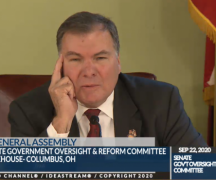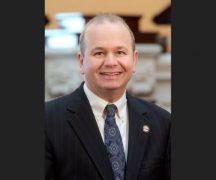A new report shows that a group that least needs to shelter its retirement savings — multi-million-dollar CEOs — enjoys far more generous tax benefits than the average working stiff. And that assumes the working stiff even makes enough to set some money aside in a 401(k).
The report, published Thursday by the Institute for Policy Studies, names two former CEOs whose companies have been suspected of ripping off Ohio health programs for the poor as particularly benefitting from the loophole.
“In the eight years we’ve been analyzing the retirement divide, we’ve seen ordinary workers struggle with rising insecurity while corporate executives enjoy ever larger gilded nest eggs,” it says. “One largely overlooked factor in this disparity: the double standard in government retirement subsidies.”
Average workers in the United States used to have “defined benefit” pensions in which employers guaranteed a monthly payment when workers ended their careers. But since the 1980s, most companies have shifted that risk onto employees in the form of 401(k) savings accounts in which some employers match a small percentage of an employee’s savings.
“By shifting investment risk onto employees through defined contribution plans, corporations have slashed their overall retirement costs, boosting earnings and stock prices and in turn pumping up executives’ stock-based pay,” the report said.
Also limiting average workers’ ability to save, the annual amount that can flow into tax-free 401(k) accounts is capped at $22,500 a year, or $30,000 if you’re over 50.
Like common workers, CEO’s can put money into accounts that are only taxed when they tap into them. But unlike 401(k)s, the amounts CEOs can plow into such “top hat” accounts is unlimited.
The benefits some are deriving are huge.
For example, at the end of last year Walmart CEO Doug McMillon held more than $169 million in his deferred compensation account, the analysis said. The company offers a 401(k) plan to its employees, but with median annual pay of just $27,136, almost half of eligible employees have no money in such accounts.
That’s far from unusual. The U.S. Census Bureau reports that 42% of Americans aged 56-64 have no retirement savings at all.
Meanwhile rich CEOs’ nest eggs grow a lot fatter as they sit in their deferred-compensation accounts, sapping the Treasury as they grow even richer.
The Institute for Policy Studies compared a hypothetical CEO who plowed $1 million a year for seven years into a deferred-compensation account to one who saved the same amounts, but was taxed on those savings. Assuming average investment returns, the CEO using a top hat account would end up with $1.3 million more that the peer who didn’t, and the Treasury would get $1 million less, the report said.
The number of chief executives taking advantage of the lavish loophole is growing quickly, the report said, and in the real world, many are plowing vastly more than $1 million a year into them. They include healthcare executives whose companies have been suspected of ripping off tax dollars meant for poor Ohioans.
One was the now-deceased Michael Neidorff, former CEO of Centene, the largest Medicaid managed-care provider in the United States. His deferred-compensation account had $328 million in it at the end of last year, the report said.
In 2018, the Columbus Dispatch reported that Centene-owned pharmacy benefit managers working for Centene’s Buckeye Health Plan appeared to overbill the Ohio Department of Medicaid by $20 million the previous year.
In 2021 Ohio Attorney General Dave Yost sued the company and just a few months later, Centene settled, agreeing to pay the state $88.3 million. The company didn’t admit wrongdoing, but it set aside more than $1 billion to settle similar claims with 20 other states. So far, settlements worth $939 million have been announced with 17 of them.
Also having a huge deferred-compensation account is former CVS Health CEO Larry Merlo.
He retired in 2021 with $122 million in his top hat retirement account. But Merlo was at the helm in 2017, when a later analysis determined that the company’s pharmacy benefit manager billed Ohio Medicaid almost $200 million more for prescription drugs than it paid the pharmacies that dispensed them.
CVS denied that it was gouging taxpayers, but an independent analysis found that what it and pharmacy benefit manager OptumRx charged in 2017 was at least triple the going rate.
The Federal Trade Commission last year opened a formal investigation into the practices of CVS Caremark and other big pharmacy benefit managers and this week it announced that it expanded the probe to include Zinc, a “group purchasing organization” founded and run by CVS that critics claim is a mechanism for avoiding transparency about how the company handles massive rebates from drugmakers.
In its report, the Institute for Policy Studies said it’s time to stop giving such people sweet retirement deals.
“Corporate executives should be subject to the same rules that govern the retirement assets of the people they employ,” it said.
Also from Ohio Capital Journal:





